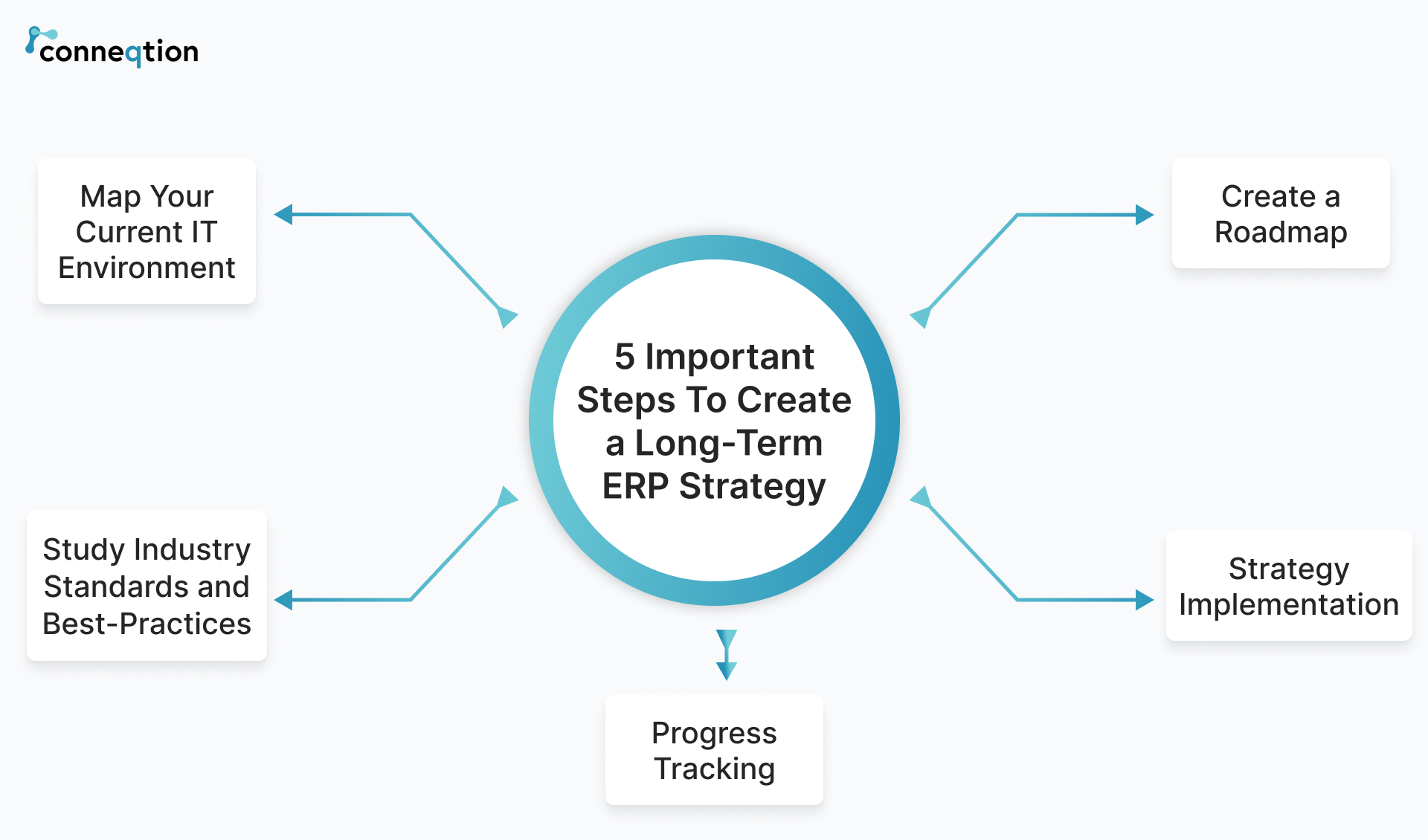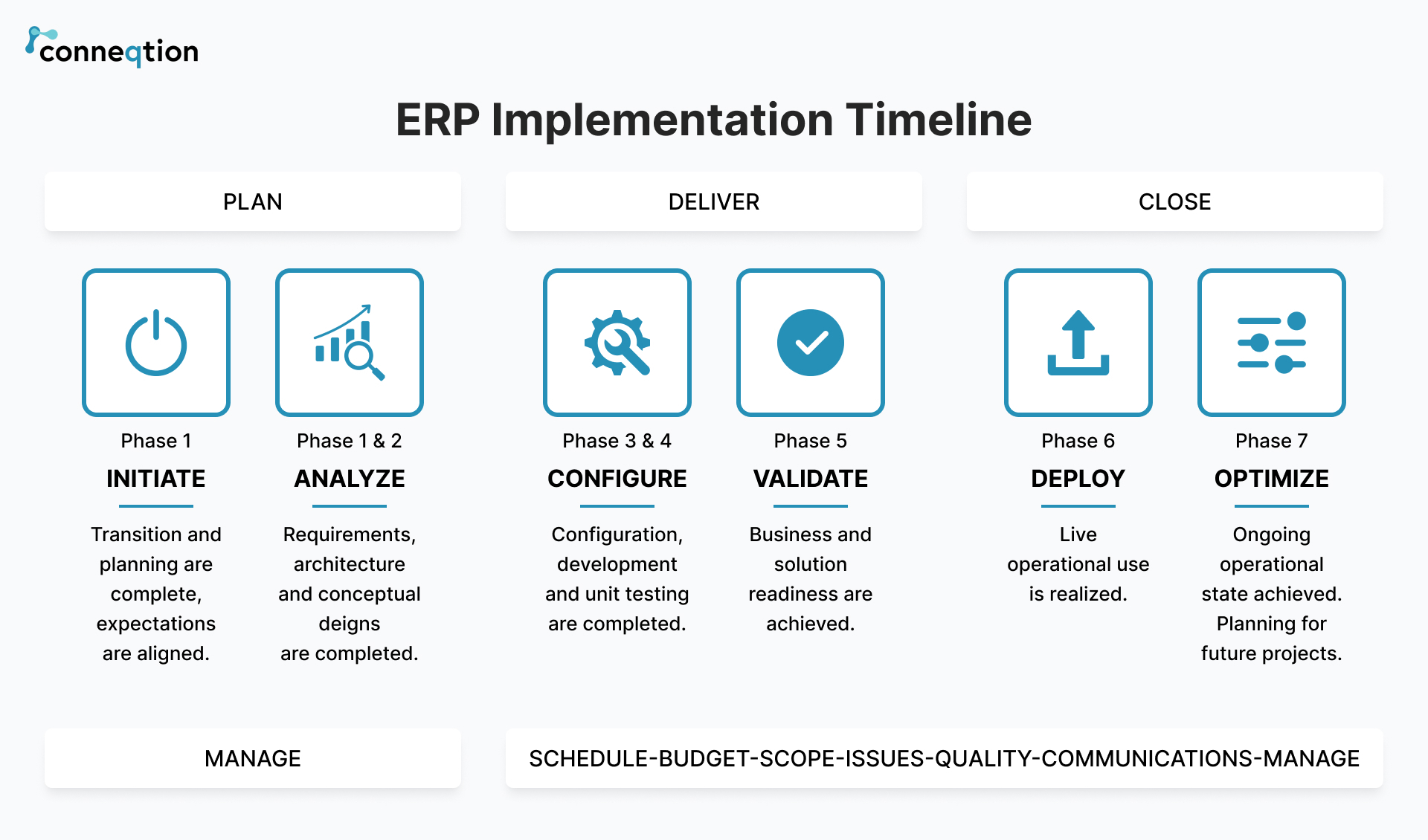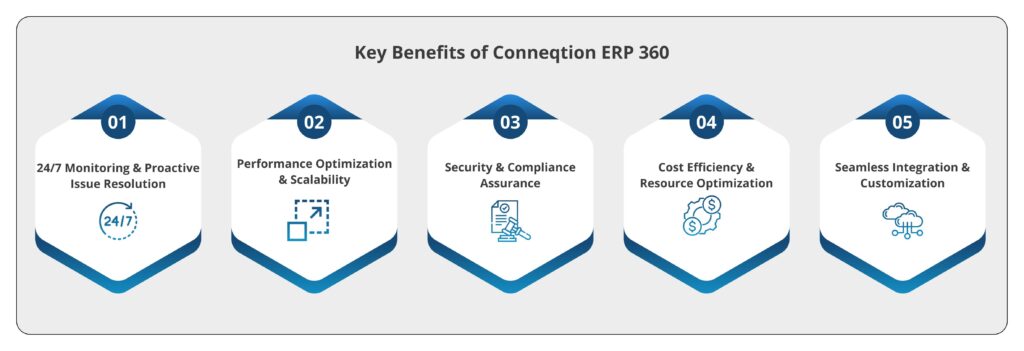In today’s fast-paced business environment, companies are increasingly turning to ERP systems. However, simply implementing an ERP solution is not enough. To truly maximize the benefits of ERP, it is essential to have a long-term strategy in place that aligns with the organization’s overall goals and objectives. In this article, we will outline five important steps that companies can take to create a comprehensive, sustainable, and effective long-term ERP strategy. 
Why should you create an ERP strategy for your business?
It’s critical to create an ERP strategy for businesses as it enables them to streamline their business processes, increase operational efficiency, and improve decision-making.
- An ERP system integrates various business functions such as accounting, procurement, inventory management, manufacturing, and customer relationship management, providing a comprehensive view of the organization’s operations.
- It helps businesses align their technology solutions with their business objectives and provides a roadmap for successful implementation.
- It helps organizations identify and prioritize their business needs, choose the right ERP solution, and ensure that the implementation process is well-planned and executed. With an ERP strategy in place, businesses can optimize their operations, reduce costs, and gain a competitive advantage in the market.
Steps to create a long-term ERP strategy
An ERP (Enterprise Resource Planning) system is a complex and critical system that can impact many aspects of an organization. Therefore, creating a long-term ERP strategy requires careful planning and execution.
Here are the steps to follow:
Step 1: Assess Current Business Processes
The first step is to define the objectives of the ERP system. These objectives should align with the organization’s overall goals and vision. Identify the key business processes that need to be supported and optimized through the ERP system. Overall, the ERP system can support and enhance processes by providing a centralized platform that can automate processes, improve data accuracy, increase visibility, facilitate collaboration, and support scalability.
Step 2: Conduct requirement analysis
Identify the functional and technical requirements of the ERP system. Gather input from key stakeholders, including end-users, IT, finance, and other departments. Gather feedback from end-users, including feedback on ease-of-use, system functionality, and any issues or limitations they have experienced.
Step 3: Select the right ERP Solution
Evaluate ERP systems that can meet the organization’s requirements. Consider factors such as functionality, scalability, ease of use, support, and cost. Selecting the right ERP solution is critical for businesses, as it can impact your productivity, efficiency, and profitability.
Also Read: Oracle ERP vs NetSuite: Which is the Right Choice for your Business?
Step 4: Develop an Implementation plan
Once you have evaluated different ERP systems, select the one that best fits the organization’s needs. Ensure that the selected ERP system aligns with your business’s long-term objectives. Developing an ERP implementation plan requires careful planning, customization, testing, training, and ongoing support. It’s important to work closely with the ERP vendor and key stakeholders.
Step 5: Conduct a Gap Analysis
Analyze the current state of your business processes and identify the gaps that the ERP system needs to address. This will help to customize the system and tailor it with your business needs.

What happens if there is a lack in ERP strategy?
Without a long Term ERP strategy business can face some challenges. The following are the major challenges when you don’t have a proper implementation strategy.
- Inefficient business processes: Without a comprehensive ERP system, businesses may rely on manual processes or disparate systems that are prone to errors and inefficiencies. This can lead to increased costs, decreased productivity, and customer dissatisfaction.
- Lack of visibility: Businesses without an ERP system may lack visibility into their operations, making it challenging to make informed decisions. This can lead to missed opportunities, increased risk, and decreased profitability.
- Data inaccuracies: When using multiple systems, data is often duplicated, incomplete, or inconsistent, leading to data inaccuracies. This can result in poor decision-making, ineffective forecasting, and a lack of confidence in the accuracy of business data.
- Difficulty in managing growth: As businesses grow, manual processes and disparate systems become increasingly challenging to manage, leading to decreased agility, increased costs, and difficulty in scaling.
- Inability to compete: Businesses without an ERP system may struggle to compete with competitors that have streamlined operations, reduced costs, and optimized processes.
Also Read: Reasons why you should hire an ERP Implementation Partner
Conclusion:
By following these steps, businesses can achieve significant improvements in productivity, profitability, and competitiveness in the long run. It’s important to develop a comprehensive ERP strategy to ensure that the ERP system aligns with business objectives and provides a roadmap for successful implementation. Ultimately you can save a lot of time and money by finding out your company requirements before ERP implementation. Want to support your ERP implementation process, talk to our experts and have a clear idea of your ERP deployment.


